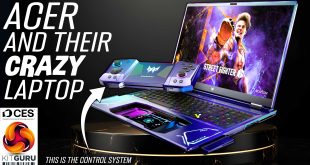After Google introduced Video Super Resolution support to Chrome, it's time for Microsoft to do the same on the Edge browser. The Chromium-based browser can now increase image quality by removing artefacts and enhancing text sharpness on low-res videos, but only if you're using select AMD and Nvidia GPUs.
If your system uses an Nvidia RTX 20/30/40 series or a Radeon RX 5700/6000/7900 series GPU, you can enable Video Super Resolution (VSR). The functionality is now accessible for 50% of users in the Canary channel and will be allowed on the stable versions once the requirements have been met. An HD icon will appear in the address bar when the functionality is activated. You may turn the function on or off by clicking the icon.

According to Microsoft, the AI technology will only function if the video resolution is less than 720p but greater than 192 pixels in width and height. Moreover, the system must be connected to AC power, meaning battery-powered devices won't run VSR. Additionally, it only works with video content not protected by DRM services like PlayReady and Widevine. As such, content from streaming services like Netflix shouldn't work with VSR.
Although still experimental, you can enable VSR on Edge via the “edge://flags/#edge-video-super-resolution” browser flag. Currently, the technology only supports dedicated GPUs, but Microsoft is already working on making it run on laptops using a hybrid GPU solution (dedicated GPU + iGPU).
Discuss on our Facebook page, HERE.
KitGuru says: Considering Edge is based on the Chromium engine, adding VSR to Microsoft's browser isn't all that surprising. Still, it's a welcoming feature for Edge users.
 KitGuru KitGuru.net – Tech News | Hardware News | Hardware Reviews | IOS | Mobile | Gaming | Graphics Cards
KitGuru KitGuru.net – Tech News | Hardware News | Hardware Reviews | IOS | Mobile | Gaming | Graphics Cards


